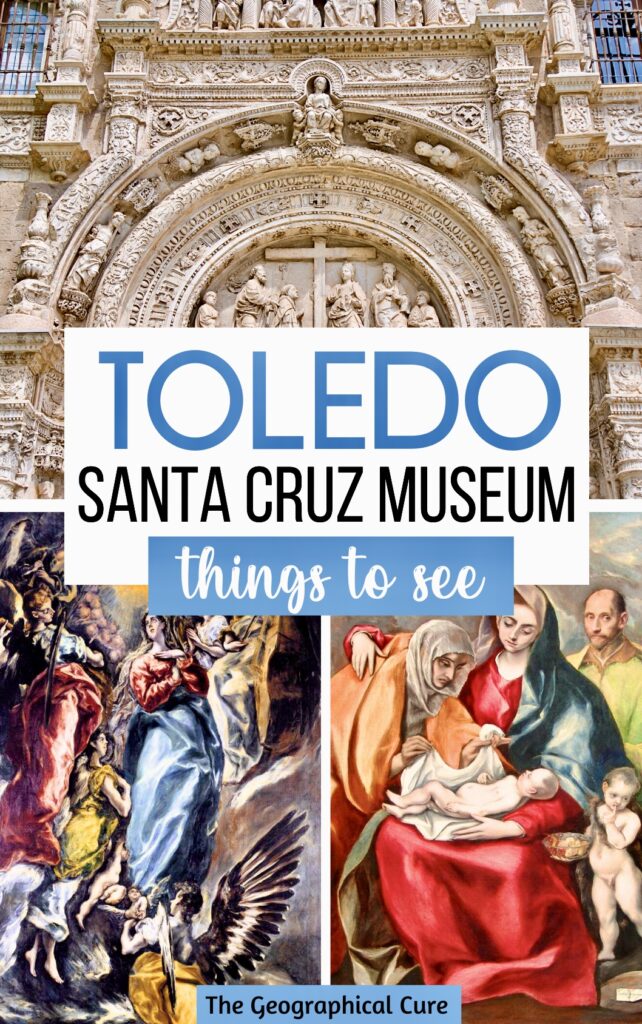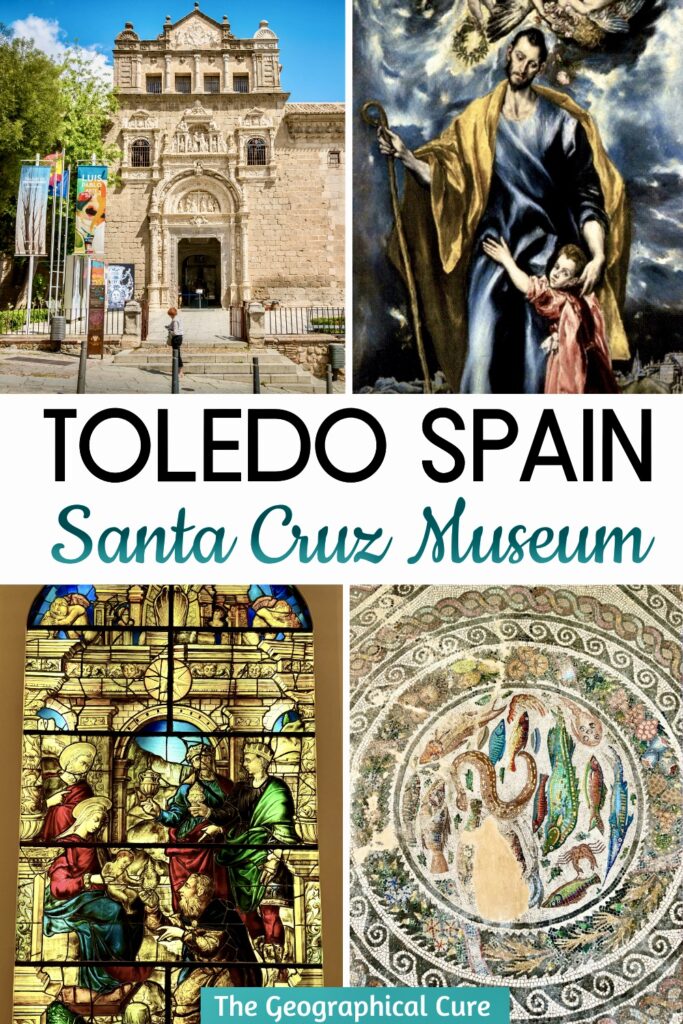The Santa Cruz Museum is probably the most interesting museum in Toledo. It’s home to one of the largest collection of El Greco’s works, including one of his finest masterpieces.
The museum is housed in a stately Renaissance building, the earliest architectural gem of the Spanish Renaissance.
It’s not your classical Renaissance though. It’s a more frilly strain in the Spanish Plasteresque style.
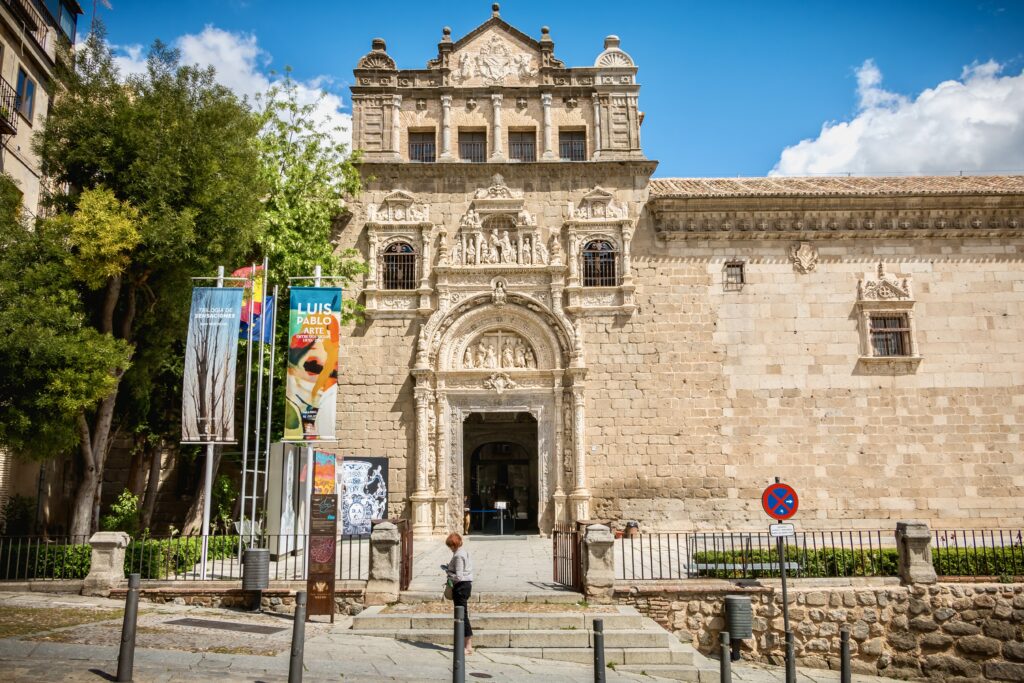
The museum was formerly a hospital and orphanage, founded by “the third royal,” humanist and diplomat Cardinal Mendoza. It was converted into a museum after WWII.
Inside, you’ll find lofty, cathedral like interiors.
There are three spaces to see — the Renaissance cloister, the temporary exhibition hall (in the basement), and the permanent collection in the second floor galleries in the shape of a Greek cross.
On my last visit, the El Greco space was closed for renovation, which was quite disappointing. But, if you’re willing to wait, you will be well pleased with the diversity of the museum.
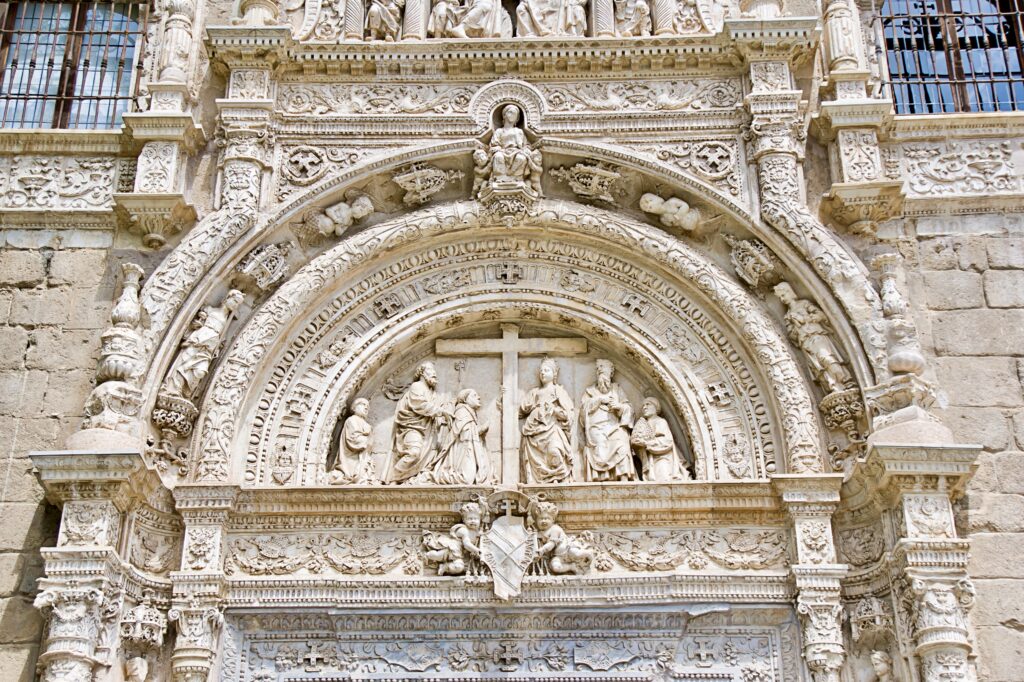
Santa Cruz Museum: What To See
Facade & Portal
The facade and building were completed in 1515 in the Isabelline Gothic style.
The delicately carved portal on the facade is a particularly beautiful. It’s a Renaissance addition added by the acclaimed architect Alonso de Covarrubias. It’s covered with rosettes, grottos, and candelabrum.
Cardinal Mendoza is represented in the tympanum. St. Peter presents him to Constantine’s mother, St. Helena, who supposedly discovered the true cross in the 4th century.
You can also see three theological virtues — Charity, Hope, and Faith. Further down are the various cardinal virtues.
At the tip top of the portal, there is a kiss Between St. Joaquin and St. Ana, symbolizing the moment of Mary’s conception.
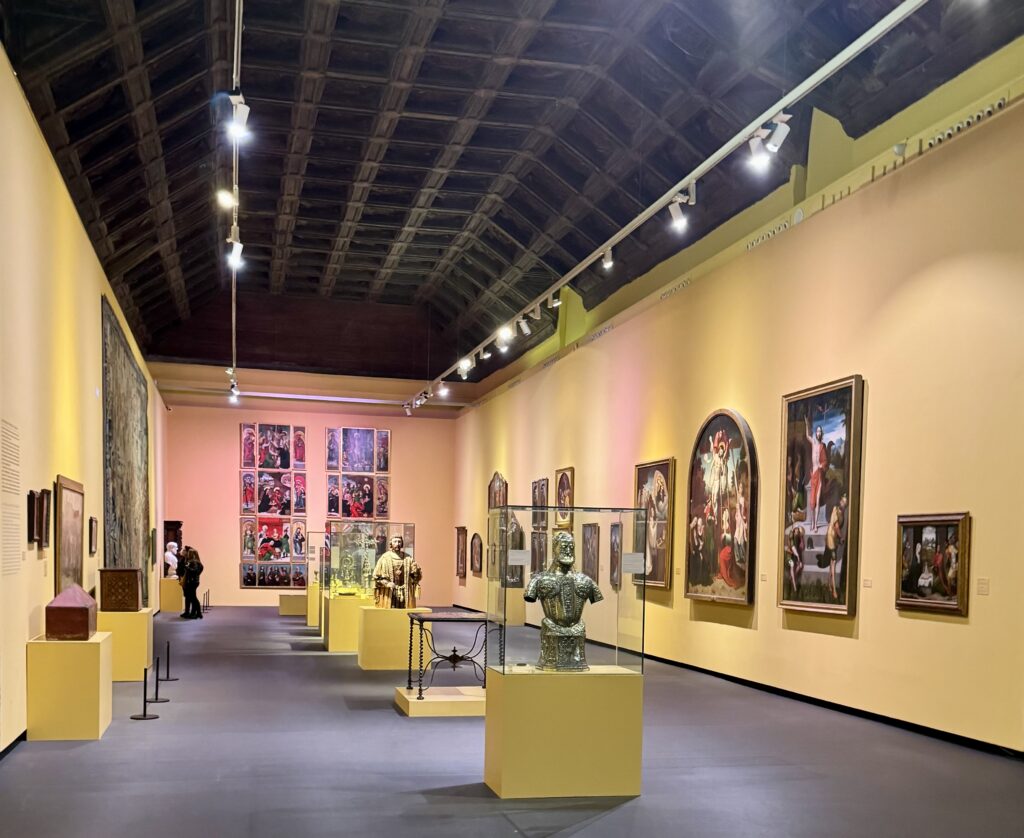
Permanent Collection
The permanent collection contains works from the Paleolithic era to the present.
Each wing is dedicated to a different monarch (Charles V, Phillip II, and 17th century Habsburgs).
You’ll find paintings, sculptures, tapestries, ceramics, antiquities, stained glass, and other decorative arts.
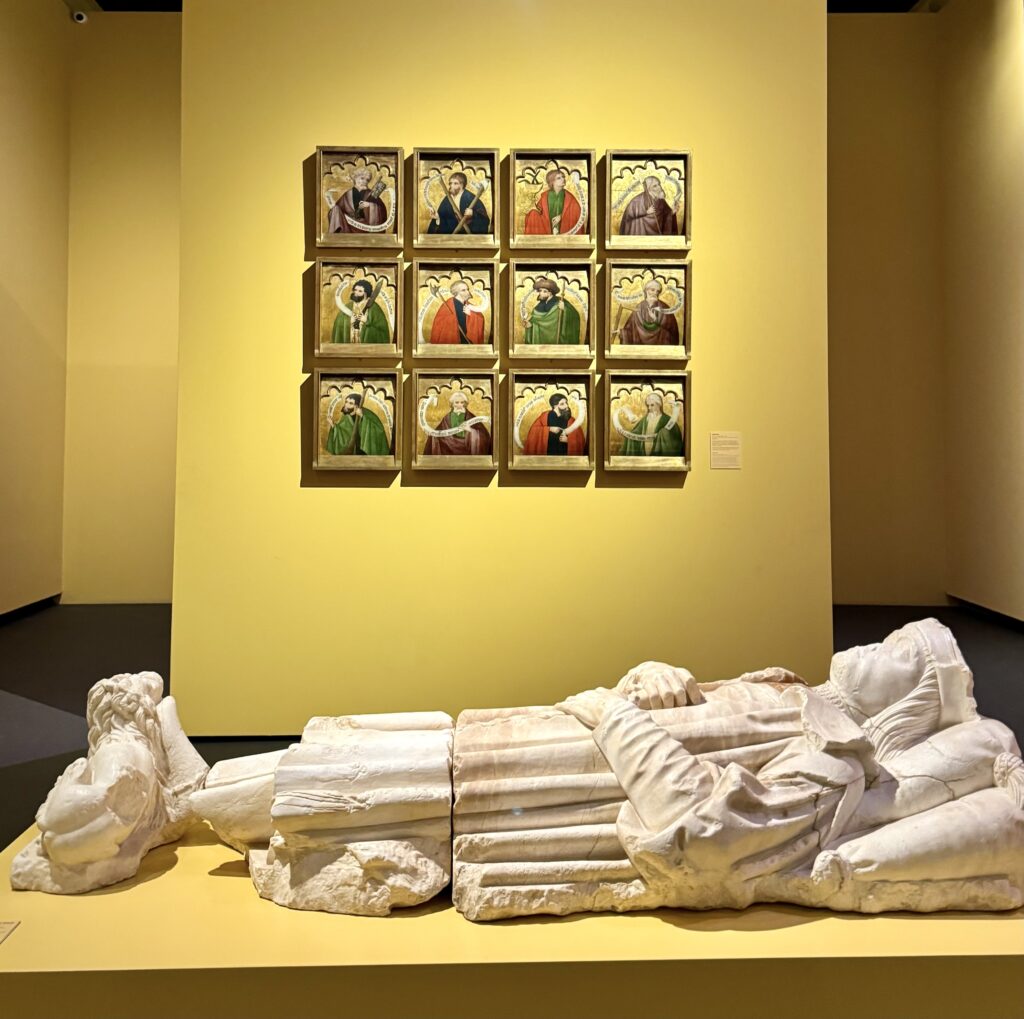
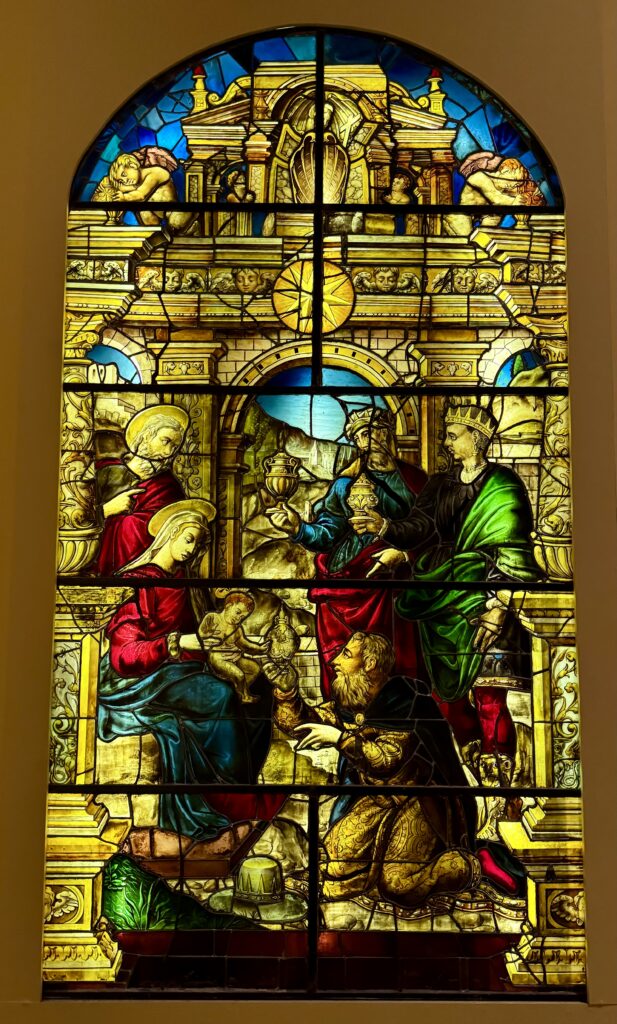
Some of the best exhibits include a beautiful 15th century Flemish tapestry, a 16th century altarpiece, a 12 panel Apostolate series set against a gold background, and a portrait of Cardinal Mendoza.
There’s also a beautiful stained glass window depicting the adoration of the magi. It was created by the great Spanish Renaissance master, Arnao de Vergara.
Another hall contains Baroque paintings and sculptures from the Baroque era to the 20th century. You’ll find works by Luca Giordano, Jose de Rivera, and Alberto Sanchez.
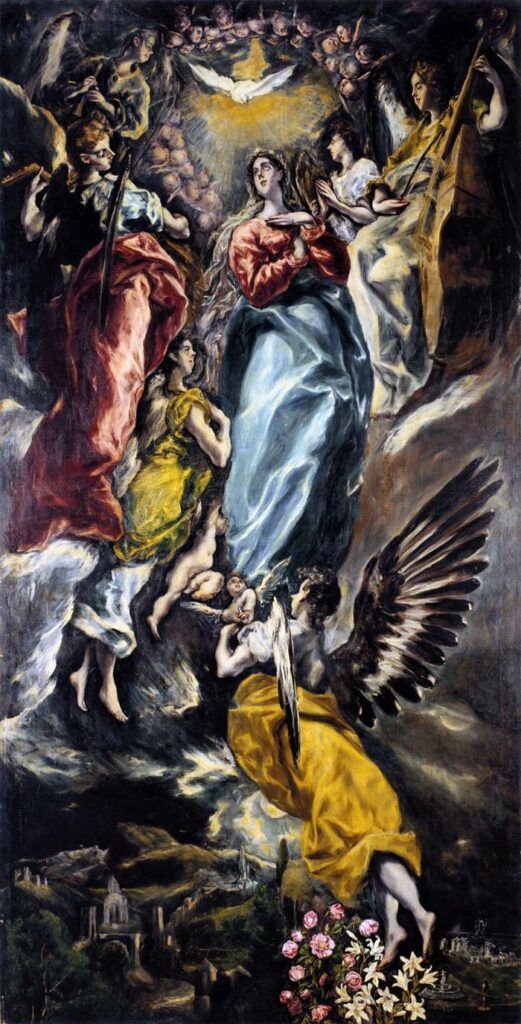
El Greco Paintings
The museum is most renowned for its fantastic set of El Greco paintings.
The artist’s specialty was capturing doe-eyed saints in voluminous robes during a moment of epiphany or religious ecstasy.
The elongated saints tilt their heads and hands toward heaven and are rendered in bright, acidic colors. Everything in the scene goes upward.
The most impressive one of the lot is the Assumption of the Virgin. It’s a beautiful altarpiece finished a year before El Greco’s death.
It’s the culmination of his unique, mature style — loose brushstrokes, acidic colors, ascending ellipsoidal shapes. Mary floats up toward the Holy Spirit, charged from within with supernatural spirituality and wrapped in radiant light.
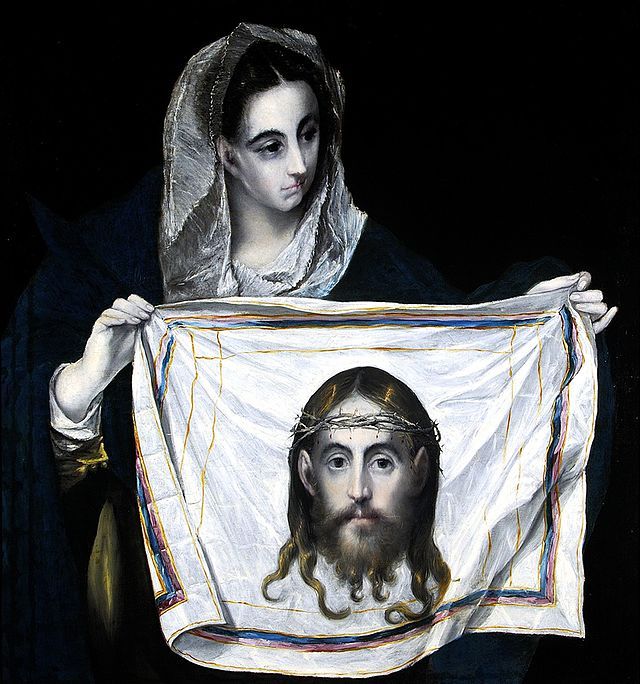
You can also see the artist’s Holy Family, San Idelfonso, St. Veronica Holding the Veil, and St. John.
Of those, the most unique is St. Veronica. The painting holds a special place in Christian lore. The veil is intertwined with the narrative of Saint Veronica, who, moved by compassion, offered solace to Jesus as he bore his cross towards Golgotha.
Legend recounts that as Jesus struggled under the weight of the cross, Veronica used her veil to gently dab the sweat and blood from Jesus’ brow. A miracle transpired: upon the cloth, an image of Jesus’ face was mystically imprinted.
The artifact, also referred to as the “sweat cloth,” has since been venerated as a tangible echo of this empathetic moment. The veil is purportedly held in St. Peter’s Basilica in Vatican City.
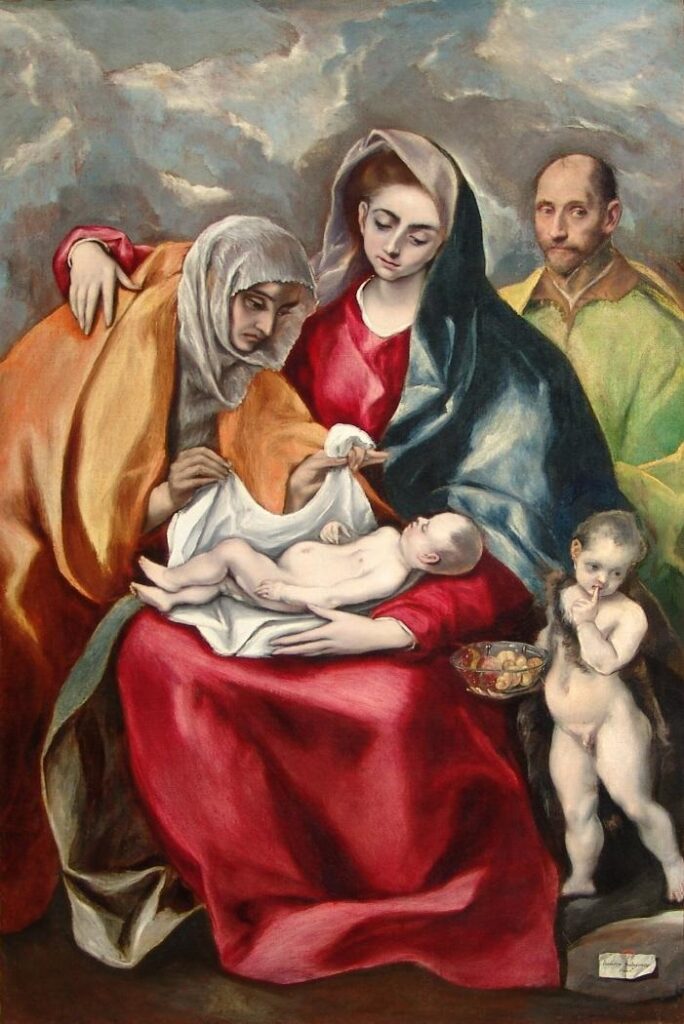
The Holy Family is an also quite beautiful. It’s a tender scene of Mary and Anne admiring baby Jesus.
A balding Joseph looks on. The whole scene is set against a stormy Toledo sky, a trademark of El Greco.
In the bottom right corner, there’s a tiny scrap of paper. This is where El Greco signed his name.
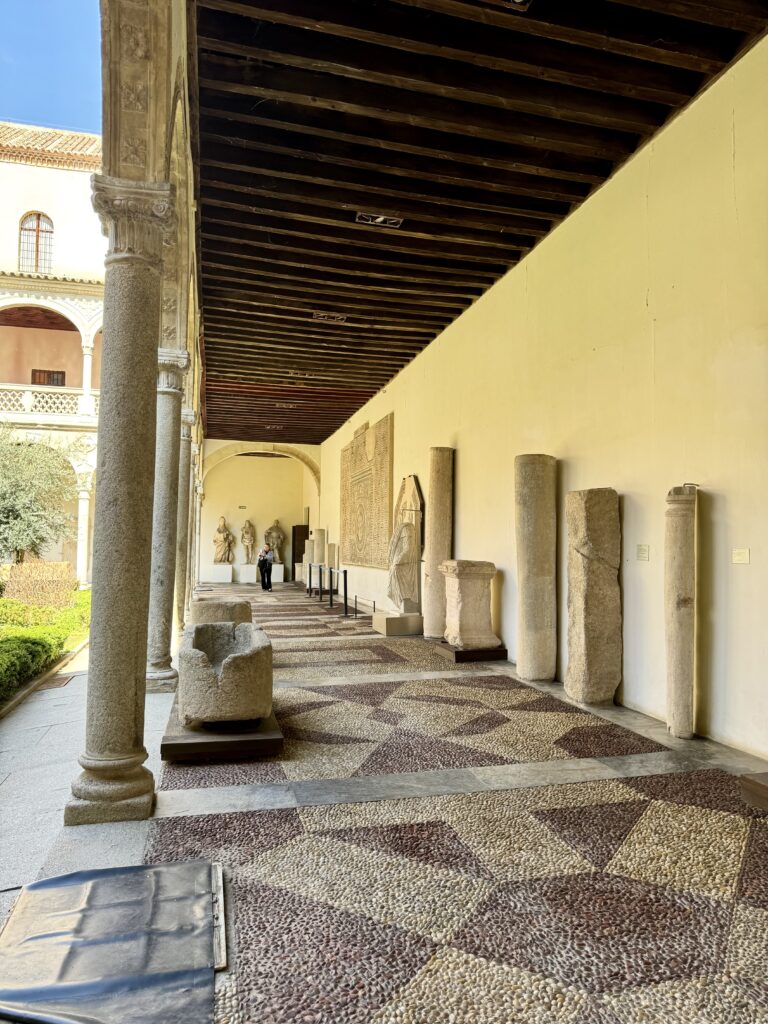
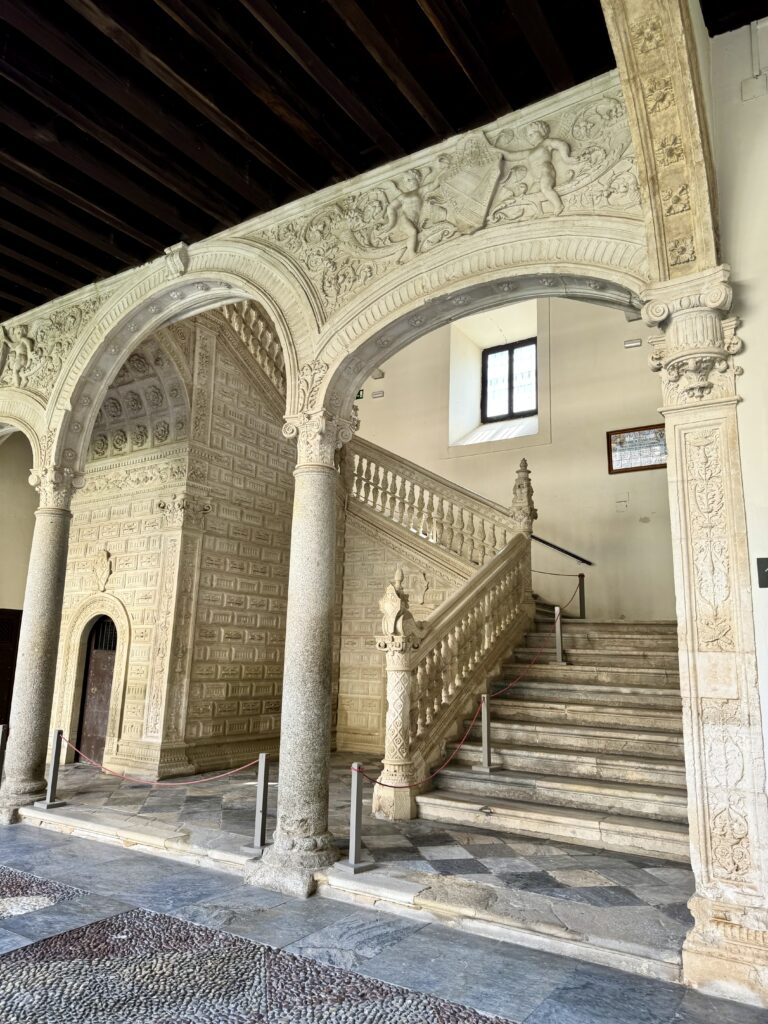
Cloister
The Renaissance cloister was the first in the city. It’s filled with artifacts from Neolithic to the Renaissance, all linked to funerals.
There’s also a beautiful 3rd century Roman mosaic that depicts the four seasons. And a marble well from the great 11th century Aljuama mosque.
If you take the plateresque stairway to the next floor, you’ll find the Carranza collection. It’s the most important private ceramic collection in Spain.
The ceramics date from the end of the Reconquista. You can see how the different regions of Spain had their own color schemes and styles.
In the final room, you can see Toledo’s distinctive blue ceramics. They were produced in the potteries of Toledo itself.
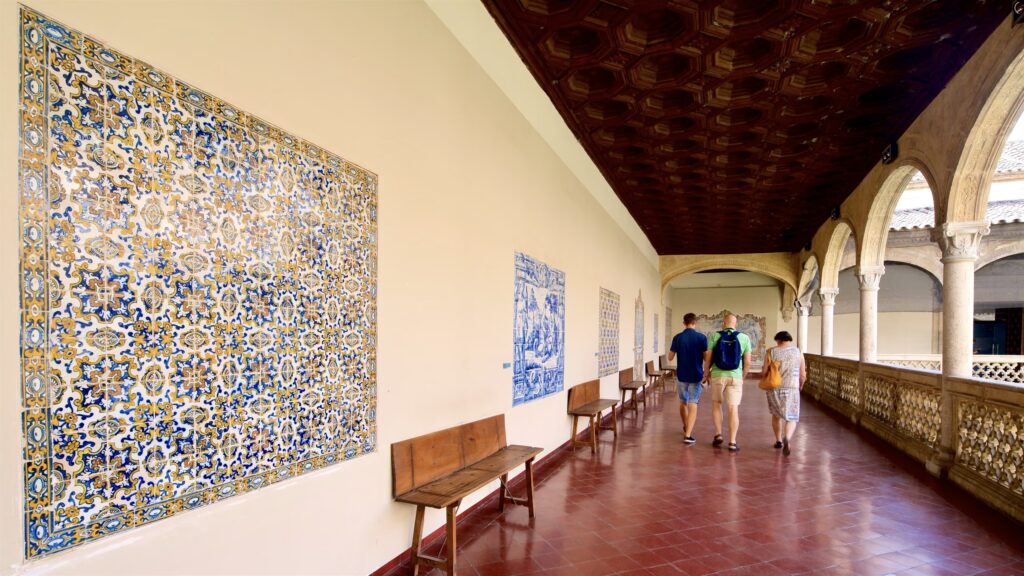
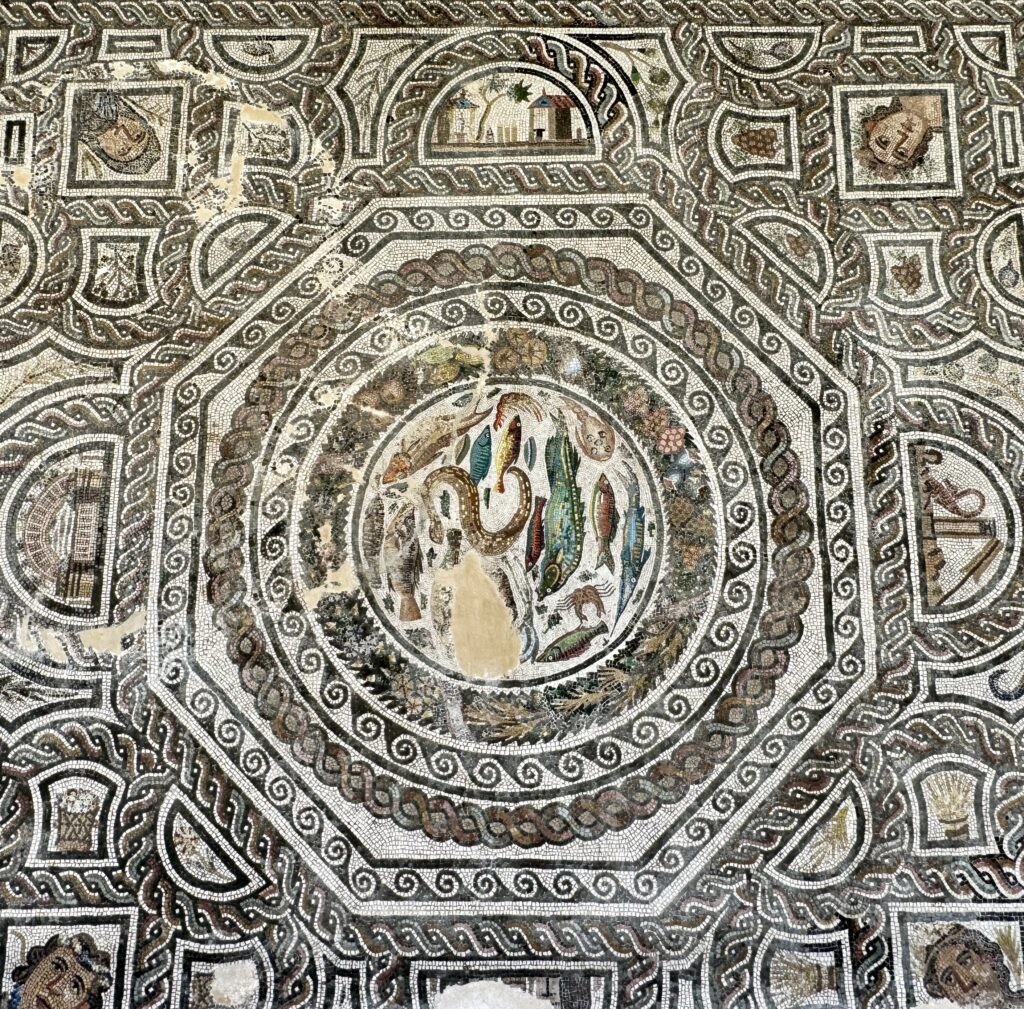
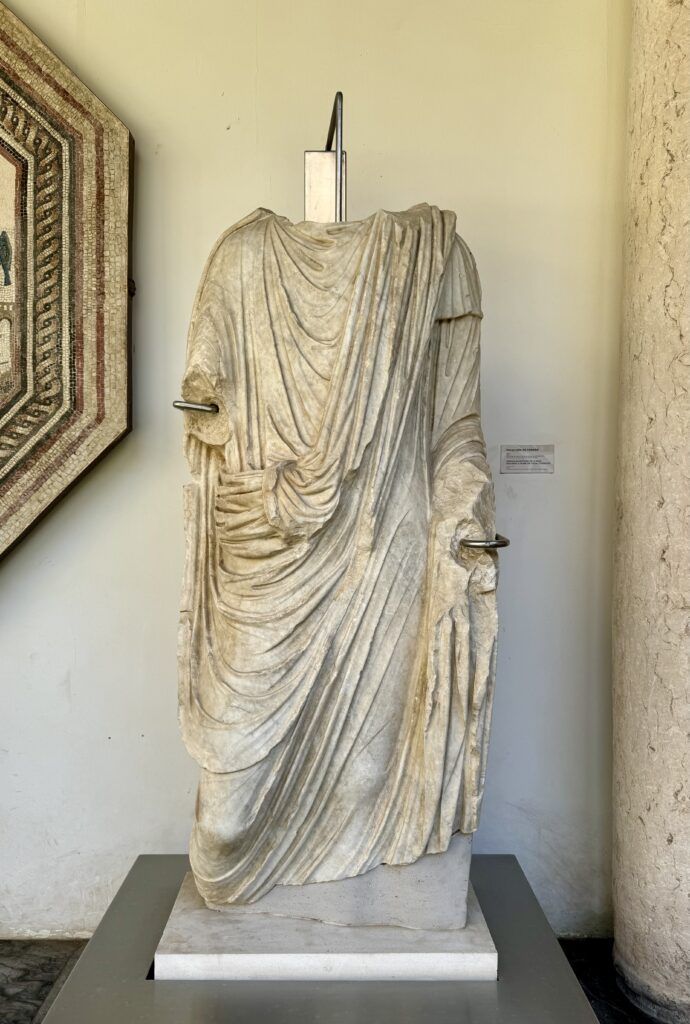
Practical Guide & Tips For The Santa Cruz Museum
Address: Calle Miguel de Cervantes, 3. From Plaza Zocodover, head through the arch to Calle de Cervantes.
Hours: Monday through Saturday 10:00 am to 6:00 pm. On Sunday, from 9:00 am to 3:00 pm.
Tickets: The museum normally costs € 4. But it’s free to visit until December 31, 2024 due to the temporary closure of the El Greco space.
Pro Tips: You’ll have to check any large bags or backpacks for one euro.
El Greco Museum Or Santa Cruz? Normally I would say to opt for Santa Cruz, which is a much larger and more diverse museum housed in a beautiful historic building. But right now, with the partial closure, the El Greco Museum is the better choice.
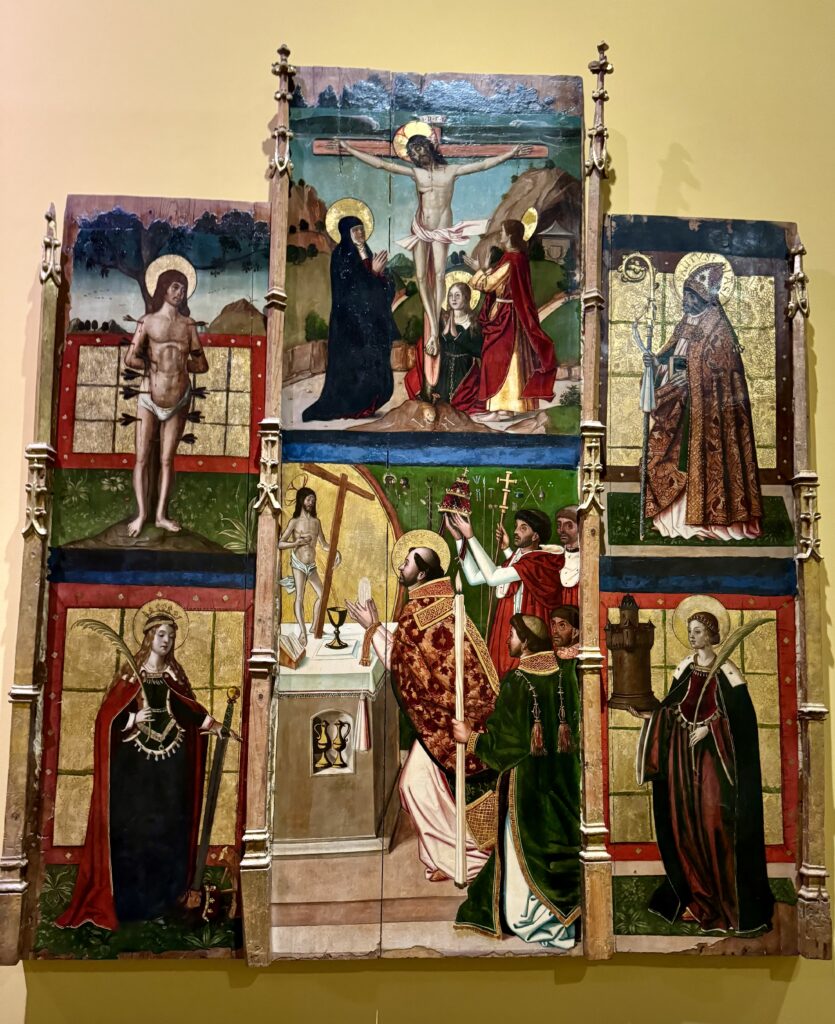
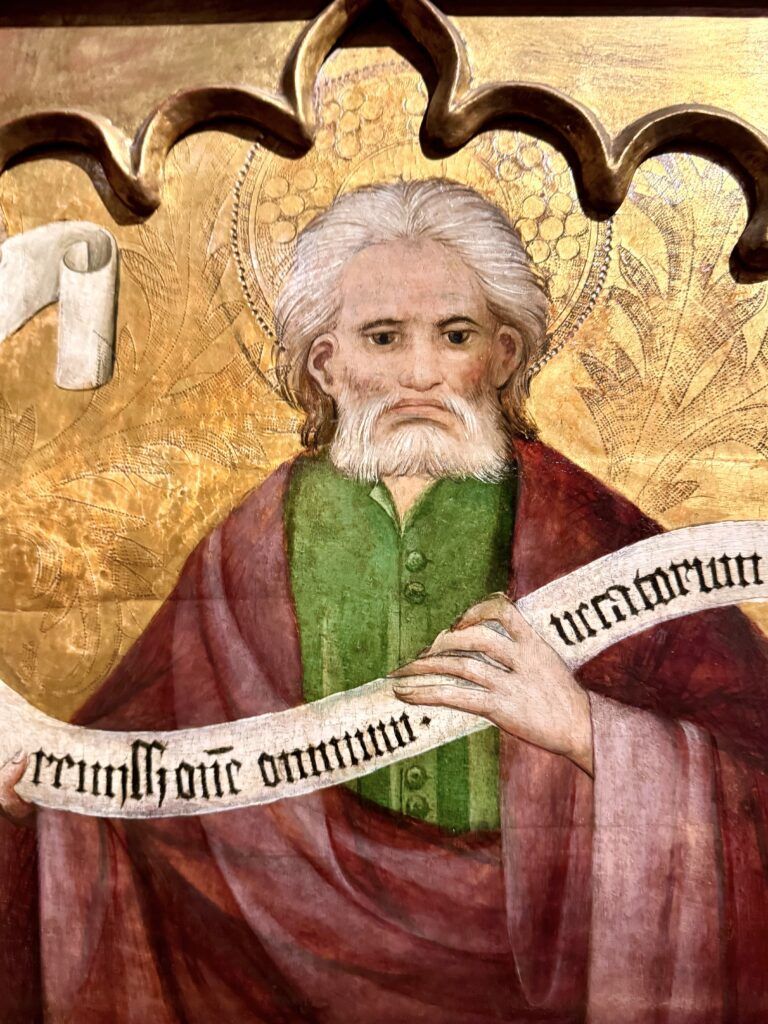
I hope you’ve enjoyed my guide to Toledo’s Santa Cruz Museum. You may find these other related travel guides useful:
- 2 days in Madrid itinerary
- guide to the Prado Museum
- 1 day in Toledo itinerary
- guide to Toledo Cathedral
- guide to the El Greco Museum
- El Greco’s art in Toledo
- guide to Santa Maria La Blanca
Pin it for later.

